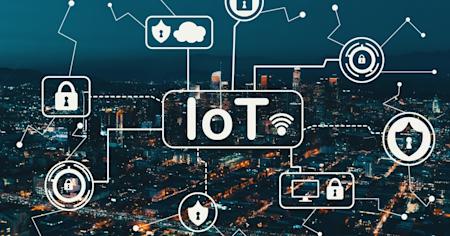The Internet of Things (IoT) is revolutionizing how we live and work, connecting everyday objects and industrial systems to the internet and enabling real-time data sharing and automation. From smart home devices to advanced industrial machinery, IoT technology is driving efficiency, convenience, and new insights across every sector.
In this article, we’ll explore what IoT is, how it works, key applications, and how businesses can leverage IoT to stay competitive in a rapidly evolving digital landscape.
What is IoT (Internet of Things)?
IoT Meaning and Definition
The term IoT, or Internet of Things, refers to the interconnected network of devices—ranging from everyday household items to sophisticated industrial tools—that communicate and exchange data over the internet. This ecosystem enables a seamless flow of information, allowing devices to monitor, share, and respond to data without human intervention.
How Does IoT Work?
IoT functions through a combination of interconnected components that work together to enable seamless data collection, analysis, and action. Here’s a breakdown of how it works:
Sensors and Actuators: Devices equipped with sensors collect specific data such as temperature, motion, or location. Actuators can then trigger actions based on this data, like adjusting thermostat settings in a smart home.
Connectivity: Once data is collected, it needs to be transmitted. IoT devices rely on various connectivity options, including Wi-Fi, Bluetooth, cellular, or proprietary networks, to send data to a centralized system or directly to other devices.
Data Processing and Analysis: The collected data is sent to the cloud or local server for processing. Advanced algorithms analyze the data, turning raw information into actionable insights that devices or users can act on.
User Interface and Automation: Through apps or dashboards, users can interact with and control IoT devices, receiving notifications, setting preferences, or viewing performance insights. IoT systems can also be configured for automation, enabling devices to respond in real time to data, such as turning on lights when movement is detected.
This entire cycle—collecting data, sharing it, processing it, and responding—enables IoT to perform tasks automatically, improve efficiencies, and even anticipate needs.
What are Some Common Examples of IoT Devices?
IoT technology has infiltrated many areas of everyday life, as well as various industries, each bringing unique advantages:
1. Smart Home Devices
Smart thermostats, lighting systems, and security cameras make homes more energy-efficient and secure. For example, a smart thermostat learns household routines and adjusts temperatures for maximum comfort and efficiency.
2. Wearable Technologies
Devices like fitness trackers and smartwatches monitor health metrics, from steps taken to heart rate and sleep patterns. These wearables empower users to track personal health and can even alert wearers to potential health issues.
3. Medical Devices
Personal health devices, such as glucose monitors, heart rate sensors, and connected inhalers, provide critical health data to patients and healthcare providers. With remote monitoring, patients receive more personalized care, and doctors can make data-driven treatment decisions.
4. Industrial and Agricultural Equipment
In industry and agriculture, IoT devices monitor machinery performance, predict maintenance needs, and track inventory, reducing downtime and increasing productivity. For example, smart sensors in tractors or irrigation systems optimize crop yields by analyzing soil moisture and nutrient levels.
Why is the Internet of Things (IoT) So Important?
IoT is transforming daily life and business by making devices smarter, more efficient, and more connected. Here’s why it matters:
1. Boosts Efficiency and Productivity
IoT automates routine tasks, enhancing productivity across sectors. In industries like manufacturing, IoT sensors monitor equipment performance, enabling predictive maintenance and reducing downtime. At home, smart devices like thermostats and lighting adjust settings based on usage, saving energy and time.
2. Drives Cost Savings
By optimizing resource usage, IoT helps cut costs. For example, smart lighting systems can be scheduled to automatically turn off during overnight hours or adjust brightness based on occupancy patterns, reducing energy expenses. Logistics firms also use IoT tracking to optimize routes and reduce fuel and inventory loss, leading to significant savings.
3. Increases Convenience and Comfort
IoT enables remote control over devices, bringing ease and peace of mind. With a smartphone, users can adjust lights, security, or temperature from anywhere, making daily routines smoother and more comfortable.
4. Improves Decision-Making with Data
IoT generates real-time data, empowering data-driven decisions. Businesses use these insights to understand customer behavior, optimize processes, and anticipate maintenance needs, ensuring smoother operations.
What Technologies Have Made IoT a Reality?
The development and growth of IoT have been fueled by several key technologies that enable devices to connect, process, and act on data. Here are some of the essential technologies behind IoT:
Wireless Communication: Reliable wireless communication technologies, such as Wi-Fi, Bluetooth, and 5G, allow IoT devices to connect and exchange data in real-time, even over long distances. These connections enable seamless communication between devices, making it possible for them to share information and respond to each other instantly.
Cloud Computing: Cloud platforms provide the storage and processing power needed to handle the vast amount of data generated by IoT devices. With cloud computing, data from IoT devices is processed, analyzed, and stored off-site, allowing for more efficient resource use and scalability.
Advanced Sensors and Actuators: Sensors are fundamental to IoT, capturing specific data points like temperature, motion, and location. Advanced sensors make IoT devices responsive to their environments, while actuators enable them to perform actions, like adjusting lighting or triggering alarms, based on this data.
Artificial Intelligence (AI) and Machine Learning (ML): AI and ML algorithms analyze the massive datasets generated by IoT devices, enabling smarter, predictive actions. For example, predictive maintenance in manufacturing uses ML to forecast equipment issues before they occur, reducing downtime and increasing efficiency.
Edge Computing: Edge computing allows data processing closer to where it is generated, reducing latency and bandwidth needs. For instance, in remote locations or environments with limited connectivity, edge devices can perform real-time analysis locally, providing quicker insights and reducing the load on central servers.
These technologies have laid the foundation for IoT, making it a reality and driving its expansion across multiple industries.
How IoT is Transforming Various Industries
IoT technology is transforming industries with innovative applications that boost efficiency, improve user experience, and enable real-time insights. Here’s a look at its impact in key sectors:
1. Healthcare
IoT enables remote patient monitoring with wearables, allowing real-time tracking of health metrics like heart rate and blood glucose. In hospitals, IoT helps manage equipment, reduce waste, and streamline operations.
2. Manufacturing
Predictive maintenance with IoT sensors prevents costly downtime by identifying issues early. IoT-driven automation and real-time monitoring improve production efficiency and inventory control in smart factories.
3. Retail
Smart shelves and IoT beacons in stores enhance inventory management and personalize customer experiences. IoT also streamlines supply chain management, ensuring timely deliveries and reducing stock shortages.
4. Automotive
Connected cars use IoT for predictive maintenance and optimized route planning. Autonomous vehicles rely on IoT sensors for navigation, while traffic management systems help reduce congestion and improve fuel efficiency.
5. Agriculture
IoT enables precision farming by monitoring soil conditions, helping farmers optimize water and fertilizer use. Drones with IoT sensors track crop health, boosting yields and promoting sustainable practices.
6. Smart Cities
IoT helps cities manage infrastructure more efficiently, with smart traffic lights, waste collection systems, and air quality monitors, all enhancing quality of life and resource management.
What is Industrial IoT?
Industrial IoT refers to the use of connected sensors, devices, and systems in industrial settings to enhance automation, efficiency, and data-driven decision-making. Unlike consumer IoT, which focuses on smart home devices and personal gadgets, IIoT is primarily used in manufacturing, logistics, healthcare, and other industries where real-time data and remote monitoring improve operations.
Key Challenges and Risks in IoT
While IoT brings numerous benefits, it also introduces significant challenges and risks that organizations must address:
Security Vulnerabilities
With so many connected devices, IoT systems are at high risk of cyberattacks. Hackers can exploit vulnerabilities to gain unauthorized access, disrupt services, or compromise data, making robust security protocols essential.Data Privacy Issues
IoT devices collect vast amounts of data, raising concerns about data misuse and breaches. Ensuring strong data encryption and strict access controls is crucial to protect user privacy.Integration Complexities
Integrating IoT devices with existing systems can be challenging due to differences in protocols, standards, and compatibility. Organizations must plan carefully to ensure smooth integration and interoperability among devices.Scalability and Network Demand
As IoT deployments grow, so does the demand on networks. Maintaining performance, data storage, and processing speed can become increasingly complex, especially in large-scale IoT environments.Device Management and Maintenance
Managing thousands of IoT devices, including updates, repairs, and end-of-life replacement, requires effective device management solutions. Without a solid management strategy, devices may become outdated or fail to perform reliably.Data Overload
The sheer volume of data generated by IoT devices can overwhelm storage and analysis systems, making it difficult to extract meaningful insights. Efficient data processing and storage solutions are essential to handle this influx.
These challenges highlight the importance of strategic planning, robust security, and effective data management for successful IoT deployment.
Best Practices for Businesses Embracing IoT
Adopting IoT can significantly enhance business operations, but a well-planned strategy is essential for success. Here are key best practices:
Select the Right Technology
Choosing IoT devices and platforms that align with your business goals is crucial. Evaluate factors like compatibility, scalability, and vendor support to ensure your IoT setup can grow and adapt as your needs evolve.Prioritize Security
Given IoT’s vulnerability to cyber threats, security must be a top priority. Implement strong encryption, regular software updates, and multi-factor authentication to protect devices and data from unauthorized access.Integrate with Existing Systems
Seamlessly connecting IoT with your current infrastructure is vital for efficiency. Work with vendors who offer flexible, interoperable solutions to avoid compatibility issues and reduce the complexity of managing multiple systems.Focus on Data Management
IoT generates large volumes of data; set up efficient storage and processing systems to handle this influx. Define which data is essential for decision-making and use analytics tools to convert raw data into actionable insights.Plan for Scalability
Start with a scalable architecture that allows your IoT network to expand without compromising performance. This approach will save time and resources as your IoT needs grow.
For seamless IoT management, consider Splashtop for secure remote access and support. Splashtop’s solutions help you manage IoT devices from anywhere, ensuring they run smoothly and securely. Start a free trial to explore how Splashtop can support your IoT strategy.
Emerging IoT Trends to Watch
As IoT technology continues to evolve, several key trends are shaping its future and impact across industries:
Expansion of 5G and Edge Computing
The rollout of 5G networks and growth in edge computing are set to enhance IoT by reducing latency and improving data processing speed. These technologies will enable faster, real-time responses, especially beneficial for applications like autonomous vehicles and smart cities.Increased Focus on IoT Security
With IoT security risks rising, businesses are prioritizing secure IoT frameworks. This includes advancements in encryption, improved authentication methods, and regulatory measures aimed at protecting data privacy across IoT networks.Growth of AI-Driven IoT
AI integration in IoT devices is expanding, allowing smarter, predictive operations. From predictive maintenance in manufacturing to personalized healthcare, AI-enhanced IoT is paving the way for more efficient and autonomous applications.IoT in Sustainability and Energy Management
IoT solutions are increasingly being used to promote sustainability, with applications in smart grids, efficient energy management, and waste reduction. Businesses and cities are using IoT to monitor and optimize resource use, contributing to environmental goals.IoT in Healthcare and Remote Monitoring
The healthcare industry will continue adopting IoT for remote patient monitoring, enabling better care and reducing hospital visits. Wearable health devices and telemedicine solutions are expected to become more widespread and sophisticated.
Simplifying IoT Device Management with Remote Access: Get Started with Splashtop Today!
Managing a network of IoT devices across diverse locations can be complex. Splashtop remote access solutions for IoT devices empower businesses to securely monitor and optimize their IoT networks from a single platform, eliminating the need for on-site visits and driving operational efficiency.
Key benefits of using Splashtop for IoT remote access include:
Real-Time Monitoring and Maintenance: With Splashtop’s remote access, IT teams can monitor device status and perform updates in real-time, ensuring that IoT devices are consistently operational and minimizing potential disruptions.
Scalability Across Locations: Designed to support large-scale deployments, Splashtop enables centralized control of thousands of IoT devices from a single interface, making it easier to oversee networks spread across multiple sites.
Enhanced Security: With TLS and 256-bit AES encryption, along with a set of robust security features, Splashtop ensures data and device security against evolving cyber threats. Remote access makes it easier to deploy timely security patches, helping keep IoT networks compliant and secure.
Cost Savings and Resource Optimization: By minimizing the need for physical travel and on-site maintenance, Splashtop remote access reduces operational costs. This allows businesses to reallocate resources to other critical areas, further enhancing productivity and efficiency.
For businesses looking to manage IoT devices with greater ease and security, Splashtop remote access provides a reliable, scalable solution that optimizes IoT operations.
Learn more about remote access for IoT devices, and sign up for a free trial!





